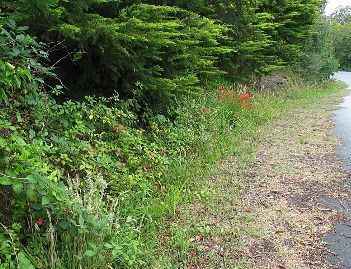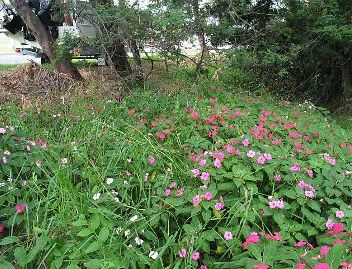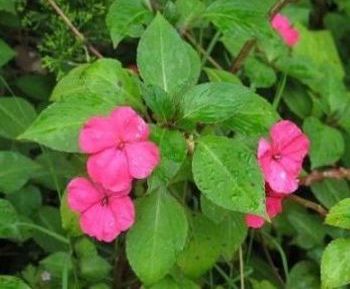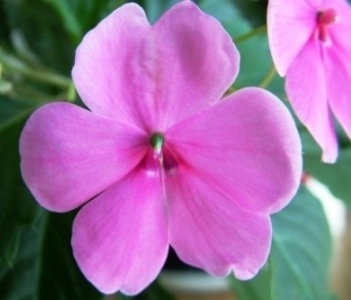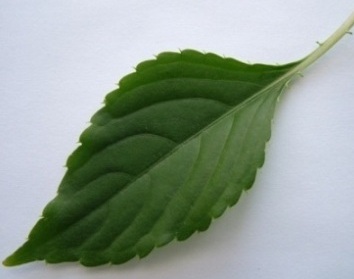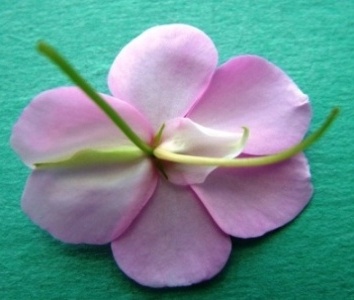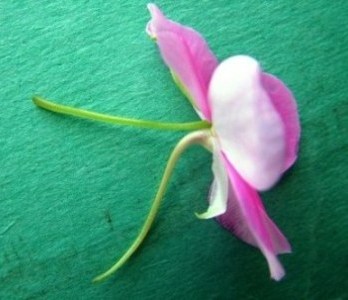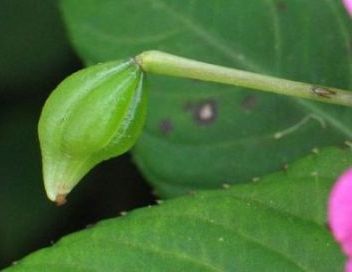Scientific Name
Impatiens walleriana
Common Name
garden balsam, Impatiens, busy Lizzie
Synonyms
I. wallerana, I. holstii, I. sultani
Family
Balsaminaceae
Origin
Native to East Africa
Habit
Glabrous (hairless), perennial (life span extends over more than 1 season) herb to 1 m high, stems are more or less succulent. Fruits are "explosive".
Habitat
Grows in bushland, along water courses and around habitation on the North and Central coast of NSW. It has also been found at a couple of locations on moist, shaded road verges in Merimbula, moist remnant bush on drainage lines and around shady wetland margins in Dalmeny and Batemans Bay, NSW South Coast. In Queensland the plant is naturalised on basalt soils in Palmerston National Park. It colonises forest margins and is displacing native fern communities around waterfalls. It has also naturalised in riparian habitats and other moist areas in South East Queensland. Its brittle stems are easily broken and carried downstream by floodwaters. It is used as an ornamental in Australia.
General Description
The young stems are greenish or reddish and translucent, mature slightly thickened and woody at the base. The stems can branch vigorously. The leaves are spirally arranged, glabrous (without hairs or scales), somewhat fleshy, broadly elliptical or ovate to oblong-elliptical or oblong-ovate, 4-
Flowers and Fruit:
The flowers appear predominantly in pairs or threes at the leaf-stem junction in the top part of the plant. They may be in different shades of pink,
Distinguishing Characteristics
It can be distinguished from poor man’s Rhododendron Impatiens sodenii in that I. walleriana is a lower plant, has smaller flowers in different shades of pink,
Policeman’s helmet
Sources & References
Grey -Wilson C (1980) ‘Impatiens of
Csurhes S. & Edwards R. (1998) 'Potential Environmental Weeds Candidate Species for Preventative Control. National Weeds Program', Queensland Department of Natural Resources.
Heenan P. B., de Lange P. J., Cameron E. K., Ogle C. C. & Champion P. D. 2004. Checklist of dicotyledons, gymnosperms, and pteridophytes naturalised or casual in New Zealand: additional records 2001-2003. New Zealand J. Bot. 42: 797-814.
Prepared by: Wojciech Adamowski, January 2006
Checked by: Jackie Miles, February 2006
Website references:
http://www.sydneyweeds.org.au/
Flora of New South Wales http://plantnet.rbgsyd.nsw.gov.au/
